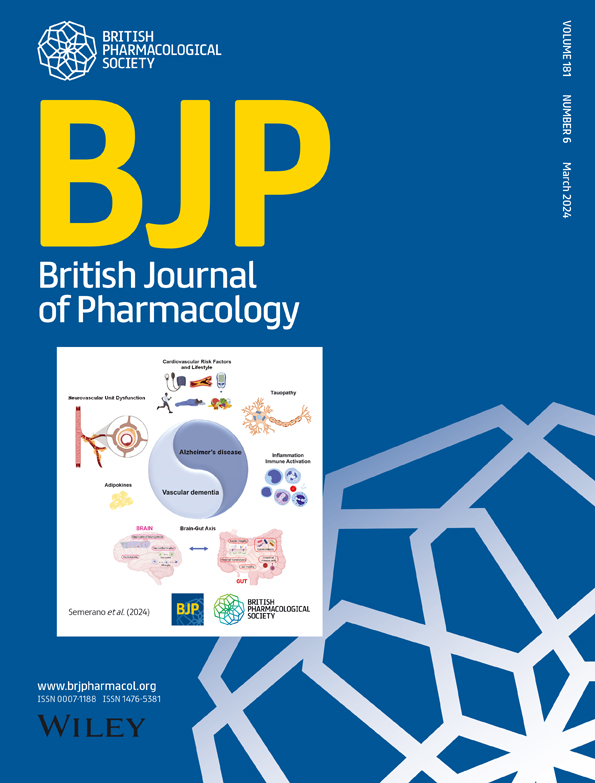Blockade of P2X7 receptors preserves blood retinal barrier integrity by modulating the plasmalemma vesicle-associated protein: Implications for diabetic retinopathy
Abstract
Background and Purpose
Plasmalemma vesicle-associated protein (PLVAP) regulates transcytosis in vascular endothelial cells. PLVAP expression is increased in pathological conditions, such as diabetic retinopathy. P2X7 receptor antagonists have been shown to preserve blood-retinal barrier (BRB) integrity. Here, we have tested the hypothesis that PLVAP expression is tightly linked to P2X7 receptor activity, leading to breakdown of the BRB in an in vitro model of diabetic retinopathy.
Experimental Approach
We integrated network approaches with an in vitro model of diabetic retinopathy using primary human retinal microvascular endothelial cells (HRMECs). Cells were treated with a P2X7 receptor antagonist, JNJ47965567, and expression of several genes predicted to belong to the P2X7 receptor signalling network were assessed. Levels and localisation of PLVAP, VE-cadherin and zonula occludens-1 (ZO-1) in HRMECs were evaluated. In vivo, the effects of JNJ47965567 on PLVAP expression in the retinas of diabetic mice were assessed.
Key Results
High levels of glucose increased PLVAP expression in HRMECs, which was blocked by JNJ47965567. Furthermore, JNJ47965567 preserved VE-cadherin and ZO-1. In the choroidal vasculature of diabetic mice, PLVAP immunostaining was increased, compared to levels in non-diabetic mice. This increase was significantly attenuated by treatment with JNJ47965567
Conclusions and Implications
This study showed that P2X7 receptor signalling is an important component of a complex gene regulatory network, including PLVAP, mediating the pathophysiology of diabetic retinopathy. The P2X7 receptor antagonist JNJ47965567 showed a good pharmacodynamic profile, suggesting that this approach could be of value in the treatment of diabetic retinopathy.

 求助内容:
求助内容: 应助结果提醒方式:
应助结果提醒方式:


